|
Week ending: 23rd February: Hogganfield Park LNR, Figgate Park, Joppa
Winter continued with mostly dismal weather, the exceptions being Thursday and Saturday, when
the Sun actually managed to break through the veil of cloud.
Thursday 20th February: Hogganfield Park LNR, Glasgow
My brief visit to Hogganfield coincided with a brief hour of sunshine. I made my usual circuit
around the park, starting at the car park where the usual beautiful birds were gathered: Mute and
Whooper Swans and various ducks such as Goldeneyes and Mallards. A Moorhen was foraging
around a group of Mallards.
Argumentative Coots were busy in all
areas of the loch - when they weren’t diving, they were picking
fights with practically every bird they met. Flirty cock Feral Pigeons
were billing and cooing around the hen pigeons, who usually resisted
their advances. The Tufted Ducks’ tufts seemed longer, but
perhaps that was because the wind was fairly strong. I only spotted a
single Greylag. Perhaps it was injured and was unable to accompany the
rest of its flock wherever they went.
| Coot |
Feral Pigeon |
 |
 |
| Tufted Duck |
Greylag Goose |
 |
 |
Next, a fellow birder beckoned me over to direct my attention to a pair of mating Goosanders. To invite copulation, the female lies flat on the surface of the water (see below).
Unfortunately the pair were disturbed by a second drake who chased of the first. We concluded
from this that the female may have been “cheating” on her drake.
A bit further down the path I photographed other Goosanders: a drake, a female and a juvenile
(note the white face patches that distinguish it from the female). In the middle of the marshy area
at the southwest corner of the loch, a Grey Heron was prowling, half-hidden in the long
grass.
| Drake Goosander |
Female Goosander |
 |
 |
| Female Juvenile Goosander |
Grey Heron |
 |
 |
A large group of mainly Black-headed Gulls were gathered at the side of the loch not far from the
Heron. They were soaking up the welcome sunshine, taking to the air to avoid approaching dogs,
or to compete for bread thrown by some passing persons.
At the east side of the loch I could see at least six Grey Herons perched on the east side of the
island. That area of the island has been called a “heronry” in the past few years, as the number of
herons nesting there has increased.
Below is a closeup photo of two of the Grey Herons. Around me as I photographed the herons, a
Woodpigeon and a Magpie were going about their business of gathering food. I continued my
usual circuit by leaving the main park road and taking a detour past the pond to the east of the
loch. I was pleased to see a pair of Gadwalls on the pond.
| Grey Heron |
Wood Pigeon |
 |
 |
| Magpie |
Gadwall |
 |
 |
Below is a view of the pond as seen from the footpath that leads to the Avenue End Road.
Some kind person had positioned a bird feeder on one of the Hawthorns that line the footpath.
Long-tailed Tits were busy devouring a fat-ball and seemed to tolerate my presence, allowing me
to quickly photograph them. After that I returned to the north side of the main park road where I
came across several flowers now starting to bloom: Crocuses, Primrose and Dwarf
Daffodils.
| Long - tailed Tit |
Crocus |
 |
 |
| Primrose |
Dwarf Daffodil |
 |
 |
The majority of the new blooms were yellow, blue, white and violet
Crocuses.
Saturday 22nd February (am): Figgate Park, Portobello
I headed east on
Saturday, which, weather-wise, was the best day of the week. Figgate
Park was my destination. After just about managing to navigate my way
past road works on the A1 and through the Hibs / Celtic football traffic,
I arrived to brilliant sunshine at Figgate Park in Portobello. I
started my circuit of that park as I had ended my circuit of
Hogganfield - by photographing flowers. My first Dandelions of
2025, Snowdrops, Winter Aconite and, on the banks of the
Figgate Burn, Lesser Celandine ….
| Dandelion |
Common Snowdrop |
 |
 |
| Winter Aconite |
Lesser Celandine |
 |
 |
…. and there were Crocuses:
On Figgate Pond there seemed to be fewer birds than I was expecting -
only Mallards, Mute Swans and Goosanders.
| Mallard |
Mute Swan |
 |
 |
| Drake Goosander |
Female Goosander |
 |
 |
I walked the long straight circuit along the footpath on one side of
the burn and back to the pond by the path on the opposite side
….
…. through an underpass …
…. and back to Figgate Pond:
That circuit produced pictures of a Carrion Crow, Woodpigeon, Herring
Gull and Magpie.
| Carrion Crow |
Wood Pigeon |
 |
 |
| Herring Gull |
Magpie |
 |
 |
I completed my circuit of the Pond where I encountered a Chaffinch by the path. I followed that with pleasing shot of a wee Robin
that was looking down at me from a branch of a pathside bush. While
photographing these I noticed a Grey Squirrel rifling through the leaf
litter and managed to snap it through the undergrowth. On the pond
there were two ducks that I initially thought were a pair of Mallards.
In fact they turned out to be a Wigeon ……
| Chaffinch |
Robin |
 |
 |
| Grey Squirrel |
Wigeon |
 |
 |
…. and a Gadwall.
By the end of my journey through Figgate Park I was fairly satisfied
with my sightings. One disappointment though was that perhaps one of
the main features of the park, certainly from a nature watchers point
of view, the boardwalk, was closed off. I presume it was in need of
repair. Hopefully it will be fixed by the next time I visit.
Saturday 22nd February (pm): Joppa
After a quick lunch I decided, after my problems travelling in, to
avoid the A1 on my way home. That lead me through Joppa where I made a
quick stop to view the seashore.
There were flowering Cowslips near the sea wall
- and Oystercatchers on the wall. On the shore all I could see were
some Redshanks with another Oystercatcher. My final picture was of a
rainbow out on the Firth of Forth - a sign of impending showers. I had
made a good decision to return home.
| Cowslip |
Oystercatcher |
 |
 |
| Redshank / Oystercatcher |
|
 |
 |
Overall my week was quieter than usual but I did manage out with the
cameras those couple of days discussed above. My favourite sightings
were the mating Goosanders and Long-tailed tits at Hogganfield and the
Robin, Wigeon and Gadwall at Figgate park. Also, I enjoyed the fact
that flowers were starting to bloom now that Metrological Spring is
about to start at the weekend. I now await the appearance of the
insects that will pollinate them.
Week ending: 16th February 2025:
RSPB Barons Haugh, Dalzell Estate, James Hamilton Heritage
Park and Broadwood Loch
The weather this week has been rather miserable: cold, overcast and showery. I did though
manage to visit several sites on perhaps the least miserable day, Friday (which happened to be St.
Valentine’s Day).
Friday 14th February am: RSPB Barons Haugh
I started early at Barons Haugh, at the Causeway Hide. I usually start in the Marsh Hide but it was
being attended by workers clearing up after the recent storm.
On my way into the Causeway Hide I snapped a wee Robin that was perched on a Hawthorn.
There were quite a few Teal on the haugh as well as gulls, such as the Black_headed and
Herring Gulls below.
| Robin |
Teal |
 |
 |
| Black - headed Gull |
1st Cycle Herring Gull |
 |
 |
The Teal ducks made a pretty picture as they busily dabbled for invertebrates.
A Moorhen appeared feeding on grass in front of the hide, then a Dunnock crossed the
path behind the hide. Meanwhile there were amorous Goldeneyes out on the water,
throwing their heads back as they tried to catch the eyes of the opposite sex. However, that was
about all I saw in the short time I was there, apart from a group of Woodpigeons pecking at the
field as I headed back to the car.
| Moorhen |
Dunnock |
 |
 |
| Goldeneye |
Wood Pigeon |
 |
 |
Friday 14th February am: Dalzell Estate
Back at the car park I decided to walk over to the Dalzell Estate, which is literally across the road
from RSPB Barons Haugh. My idea was to scan around its wooded paths for fungi. Below is the
view from the path that overlooks Easter Braes, sloping fields that once attracted children rolling
their decorated boiled eggs at Easter time.
The River Clyde passes the foot of the Braes and I spotted a pair of Mute Swans on the river. I
then found my first fungus, Turkey Tail, growing on the trunk of a dying tree. I was also
pleased to find a patch of Snowdrops, watched by a tweeting Blue Tit.
| Mute Swan |
Turkey Tail |
 |
 |
| Common Snowdrop |
Blue Tit |
 |
 |
Further along the path, near the Muirhouse flats, I came across more Turkey Tail as well as some
Scarlet Elf Cup and the large, Artist’s Bracket. On the way back to the car I
found Dog Lichen near the path.
| Turkey Tail |
Scarlet Elf Cup |
 |
 |
| Artist's Bracket |
Dog Lichen |
 |
 |
Friday 14th February pm: James Hamilton Heritage Park, East Kilbride
After lunch I drove to the James Hamilton Heritage Park in East Kilbride. It is a bonny wee park
centred around a loch that usually has a rich variety of mainly common birds.
Snowdrops were blooming here too. I await the blooming of the many budding daffodil, crocus
and tulip plants that were all around the park.
Mallards were preening by the loch at the start of my circuit of the loch. A few Cormorants were
standing on a boom that stretched between the island and shore and a lone Greylag Goose
paddled into view. A cheeky Jackdaw landed on the arm of a park bench and looked at
me, probably waiting for bread.
| Female Mallard |
Cormorant |
 |
 |
| Greylag Goose |
Jackdaw |
 |
 |
As I passed a line of trees and was able to see the fields north of the loch, I noticed that there was
a large gathering of birds that I initially thought were crows. They were in fact Jackdaws - about
200 of them.
A little later, something put the Jackdaws up and they flew over the loch.
The Jackdaws settled in nearby trees and then about 30 Greylags flew in and descended noisily
onto the loch. I managed to walk to a position where some of the Greylags were quite close.
There was a very light coloured, probably leucistic, Greylag in their group. It was accompanied by
an ordinary Greylag which was chasing away and other Greylags in the vacinity. Perhaps it was its
parent or even its mate.
Gradually the Greylags were were dispersed around the loch.
The Black-headed Gulls waited on the water for their next feeding opportunity when some kind
human would approach with a poly-bag. The Greylags were still restless and changing position a
lot and the Jackdaws were fairly settled in the surrounding trees. I had noticed Canada Geese
earlier, on the shaded sides of the island but when I walked around the loch I encountered a
Canada Goose at the lochside and managed a fairly decent photo.
| Black - headed Gull |
Greylag Goose |
 |
 |
| Jackdaw |
Canada Goose |
 |
 |
At the end of my circuit of the loch, there were Black-headed Gulls on a boom and a Moorhen
was on top of a large buoy. Near the car I snapped a Magpie and then a Woodpigeon before
driving to my next, and final site.
| Black - headed Gull |
Moorhen |
 |
 |
| Magpie |
Wood Pigeon |
 |
 |
Friday 14th February pm: Broadwood Loch, Cumbernauld
Broadwood Loch is in another Lanarkshire “new” town, Cumbernauld. The roads connecting them
are very efficient and I was parking next to Broadwood Loch only 20 minutes after leaving East
Kilbride. Continuing the romantic theme, there was a pair of Mute Swans getting frisky at the
loch’s edge. And on the loch, the Goldeneyes were also pairing up.
This drake Goldeneye was particularly active around the females.
The Wigeons too were getting together and the fancy, bright head plumage of the
Cormorant below showed that this male was on the look out for a mate. In fact the plumages of
every male bird, such as Goosanders and Mallards, were bright, neat and tidy. Spring, the
breeding season, is just around the corner. The birds will be ready.
| Wigeon |
Cormorant in Breeding plumage |
 |
 |
| Goosander |
Mallard |
 |
 |
It was a very productive Friday with 4 sites visited throughout the day. There were 22 species
sighted. It was a pity I didn’t see the Smew at Broadwood but I was pleased to see some fungi at
Dalzell Estate, and it is always entertaining to see the courtship antics of the various birds. Milder
weather is predicted towards the end of next week. The Sun might even make the odd appearance.
Week ending: 9th February 2025:
Hogganfield Park LNR, Strathclyde Country Park, Skateraw,
Dunbar Harbour and Belhaven Bay
This week I managed out with my cameras on the three sunniest days of the week and was
rewarded with some pleasing shots of mainly birds and scenery. There were though, signs that it
wouldn’t be too long before flowers start blooming
Tuesday 4th February: Hogganfield Park LNR
I had a brief visit to the the east side of Glasgow for a circuit of Hogganfield Park. The Mute and
Whooper Swans were still very much present at the car park feeding area, as were the usual
Moorhens and Tufted Ducks.
| Whooper Swan |
Mute Swan |
 |
 |
| Moorhen |
Female Tufted Duck |
 |
 |
I noticed that male Cormorants on their usual wooden perches were decked in breeding plumage
and the drake Goosanders were accosting the females in between fighting them for chunks of
bread. So Spring seemed to be in the air, a notion which was strengthened further when I
watched two mating Great Crested Grebes (sadly they were partially hidden behind some dense
plumage). My short walk finished with a snap of a juvenile Herring Gull descending onto a large
buoy.
| Cormorant in Breeding plumage |
Goosander |
 |
 |
| Great Crested Grebe |
1st Cycle Herring Gull |
 |
 |
Wednesday 5th February: Strathclyde Country Park
The following day my constitutional walk was along a section of Strathclyde Country Park. It was
there that I photographed a patch of blooming Snowdrops. In the same area I noted that
Daffodils were beginning to sprout, so it should be a matter of days rather than weeks before they
bud and bloom. At the rowing boat starting bays at the north end of the loch, there was a large
Grey Heron using the solar-panelled roof of a cabin as a vantage point to peer down into the
moat. In the bushes nearby, a Robin was serenading prospective mates with its warm,
warbling tones. Many Greylag Geese were dotted around the grassy areas of the park. The ones
below were at the Beach swing park. In nearby trees, a very acrobatic Grey Squirrel paused to
watch me as I passed. I also snapped a Grey Wagtail that was foraging in the pebbly
lochside.
| Common Snowdrop |
Grey Heron |
 |
 |
| Robin |
Greylag Goose |
 |
 |
| Grey Squirrel |
Grey Wagtail |
 |
 |
Friday 7th February (am): Skateraw
Arguably, the best day of the week was Friday and I drove to the East Lothian coast at Skateraw,
east of Dunbar. The Sun shone throughout the visit - which aided my efforts. The tide was low but
I was lucky enough to arrive at the beach at Skateraw at just the right time - as I’ll explain.
The seashore to the east of Skateraw beach was rather deserted of birds ….
..,,, but there were large numbers of Sanderling on the beach. I settled on my wee 3-
legged stool, with the Sun behind me, and waited to see if they would venture close to where I
was sitting. They did and I got some close views. There was a large salt pool by the rocks on the
left and it had other small waders namely: Oystercatchers, Dunlin, Ringed Plovers and a lone drake Shelduck .
Next I trekked out to Chapel Point at the west side of the bay. Below is the view looking west to
Barns Ness lighthouse.
The tide was well out and the massive slabs of exposed rock stretched west along the coast for
about half a mile. There were piles of rotting seaweed scattered along the shore, so I sat on my
stool and waited to see if there were any birds attracted by the prospects of finding invertebrates
in the dead seaweed. I didn’t have long to wait. A Grey Wagtail, then a Pied Wagtail appeared,
followed by a small flock of Rock Pipits. At Chapel Point I photographed a pair of Mallards that
drifted past, but there was little else of note there. I returned to the car and set off for Dunbar, but
stopped at one of the fields when I spotted a Pheasant crossing the road and entering the
edge of the field. After few minutes it emerged from the long grass to give me a reasonable view.
|
Grey Wagtail |
 |
 |
| Grey Wagtail |
Rock Pipit |
 |
 |
| Mallard |
Pheasant |
 |
 |
Friday 7th February (pm): Dunbar Harbour
I parked at Dunbar Harbour which has the ruin of Dunbar Castle at its entrance.
I walked into the ruin of the Battery from which I got a picture of the Bass Rock which is roughly
10 mile to the northeast.
There were birds on the rocks just north of the battery. My Coolpix P950 set at 2000mm managed
very passable shots of a Cormorant and a Shag that were standing on the guano-covered rock. I
moved from the battery and walked to the viewing area on the sea wall that looks onto red
sandstone rock stacks where Shags and Herring Gulls usually nest. I snapped a Feral Pigeon that
was watching me from the top of the very tall sea wall. I was able to look over the top of the wall
by ascending the steps built there for the purpose.
|
Cormorant |
 |
 |
| Shag |
Feral Pigeon |
 |
 |
I was surprised to see that there were Shags already gathering on the stacks so early in the year,
but there they were. Occasional individual Shags would fly off the rock stacks, presumably
to feed, but would return after a short time. Herring Gulls too were gathering and pairing up. I was
lucky enough to find one large Herring Gull feasting, just below my stance, on a large Harbour
Crab.
Friday 7th February (pm): Belhaven Bay
Pleased with my sightings at the harbour I relocated very briefly to the Shore Road car park at
Belhaven Bay for one last look and a cup of tea and a biscuit. The seashore was very far away…..
…..but there were a few birds on the inner bay, notably a few Redshanks and a Curlew. I was
delighted to find a quartet of Common Snipe snoozing at the west corner of the inner bay
the first I can recall seeing there. Seafield Pond had mainly Mute Swans, Mallards and Tufted
Duck but the low, bright Sun was awkwardly placed for decent pictures. I did though get a decent
photo of a drake Teal since I managed to position myself at the northwest corner of the
pond, so avoiding looking into the sunlight.
| Redshank |
Curlew |
 |
 |
| Common Snipe |
Teal |
 |
 |
I really enjoyed my walks in the sunshine with the cameras this week (even although the
temperatures were far from comfortable), and accumulated a fairly respectable 29 species. Next
week looks as if it will be even colder and it will be very dull, but will probably be mainly dry.
However I will use the right camera settings and hopefully I’ll accumulate more pictures given the
chance, hopefully including some flowers and maybe even some fungi.
Week ending: 2nd February 2025: Broadwood Loch, Musselburgh and Port Seton
I managed out with my cameras on each of the two good, sunny days out of an otherwise cold,
dull week.
Tuesday 28th January: Broadwood Loch, Cumbernauld.
The main attraction at Broadwood Loch was the return of a bird I photographed last year, a Smew. There are usually lots of beautiful birds at the loch, so given the lovely light, I looked
forward to some pleasing shots. I parked the car on Atholl Drive, at the north end of the loch and
as soon as I got out of the car, a wee Robin was watching me from its perch on a pathside bush.
And at the lochside I got great views of Moorhens, Little Grebes and Goldeneyes feeding. The
Goldeneye drakes were, in between dives, wooing the females by throwing their heads back.
The females were definitely not appreciating all of the attention and were dashing around, trying to
evade the amorous advances.
There were also male and female Tufted Ducks diving for food ,and on the grassy banks, Canada
Geese were foraging.
Occasionally fights broke out, over what, I couldn’t tell, but the rows were loud and aggressive.
I was heading for the small island on the northwest side of the loch, where I saw the Smew last
year. On the way I snapped some Wigeon but when I reached the island there was no sign of the
Smew. Luckily I met a fellow birder who informed my he had just seen it at the south end of the
loch. On my way there I photographed a House Sparrow in a red bush and a Buzzard that
circled overhead for a time. At the car park (which was closed due to a fallen tree) there was again
no sign of the Smew, but I did see some fine drake Goosanders
| Drake Wigeon |
Female Wigeon |
 |
 |
| Female House Sparrow |
Robin |
 |
 |
| Buzzard |
Drake Goosander |
 |
 |
The view at the south end of the loch was rather nice.
I kept walking, reasoning that the Smew must be making its way northward, hopefully on the east
side where I was about to explore. There were quite a few Mute Swans and I captured a nice
image of a very cooperative Magpie. Then I spotted the Smew. Unfortunately it was about 50m
out but I did manage a nice record shot. The Smew was repeatedly diving, but each dive was
taking it further away from where I stood, until it was over on the opposite side of the loch. As
some sort of compensation, a fine drake Pochard drifted past very close to me, the first I'd
seen this year.
| Mute Swan |
Magpie |
 |
 |
| Smew |
Drake Pochard |
 |
 |
My final shot of the day was of a line of Cormorants drying their wings on on the wee island.
Thursday 30th January (am): Musselburgh
On what was probably the best day of the week, I travelled to the mouth of the River Esk in
Musselburgh. The tide was low and rising.
Below is a panorama of Edinburgh to the west of Musselburgh. Prominent at the centre of the
shot is Calton Hill in Edinburgh, easily picked out by Nelson’s Monument tower and the columns
of the National Monument.
There were some Goldeneyes active at the mouth of the Esk. Starlings were soaking up the
sunshine from the comfort of the Cadet Hall. A small flock of Redshanks sped past just as I had
spotted a drake Red-breasted Merganser diving.
| Goldeneye |
Starling |
 |
 |
| Redshank |
Red - breasted Merganser |
 |
 |
Some Turnstones were picking their way along the water’s edge while some Bar-tailed Godwits were probing the shallows on the opposite side of the river. A pair of Pied Wagtails
appeared on the near bank beside the Turnstones, before flying off again.
| Turnstone |
Bar - tailed Godwit |
 |
 |
| Male Pied Wagtail |
Female Pied Wagtail |
 |
 |
I made for the “new” scrapes by following the sea wall for half a mile to reach the access path.
The view below of the wall shows the prominent hill, the North Berwick Law, in the distance.
Eventually I reached the new scrapes and from the first hide I could see plenty of birds roosting
such as the Greylag Geese shown below……
…. as well as large numbers of Wigeon ….
… and Teal.
There were also a few Wigeon paddling around the moat. Also, a Curlew was using its
large curved beak to explore the long grass of the banking around the moat. Some Skylarks were chasing each other across the stones of the scrapes. I photographed one Skylark
ascending, singing its familiar, incessant song as it rose. A few pairs of Gadwalls were feeding
on the pools.
| Wigeon |
Curlew |
 |
 |
| Skylark |
Gadwall |
 |
 |
Right in the middle of the scrapes was a quartet of snoozing Oystercatchers ….
…. and a beautiful Mute Swan.
Next I went to the “old” scrapes, but found there were only birds near one of the hides - from the
he leftmost hide, low numbers of Dunlin, Redshanks, Lapwings and Curlew could be seen. I
next headed to the seawall adjacent to the scrapes. A large Carrion Crow watched me as I
passed.
There was a flock of Wigeon on the Boating Pond, however they were put up by uncontrolled
dogs.
At the sea wall I was disappointed to find that there were very few birds to be seen. All I saw in
the short time I was there was a group of Goldeneyes flying past.
Thursday 30th January (pm): Port Seton
After lunch I relocated briefly to Port Seton, where I found that the rocks were almost completely
covered by the rising tide, with only a few birds, Cormorants, Oystercatchers and gulls, still
clinging to ever-decreasing areas of rock.
Oystercatchers and Redshanks were flying between fewer and fewer rocks, “encouraged” by the
bullying tactics of the large gulls. Meanwhile, a
single, handsome drake Eider drifted across
the scene - giving me a lovely picture to finish my set.
| Redshank |
Oystercatcher |
 |
 |
| Great Black - backed Gull |
Drake Eider |
 |
 |
It had been a very pleasant couple of days during which I’d photographed 37 species - a healthy
number considering it is winter. The weather next week is to be bright but cold in the second half of the week - let's hope so.
Highlights - February 2025
We present this month’s gallery of my
favourite pictures I’ve taken during February 2025. They are
not listed in the order they have been taken, but according to a series
of themes. I’ve kept
commentary to a minimum, preferring to let each picture talk for itself.
WADERS
| Curlew |
Dunlin |
 |
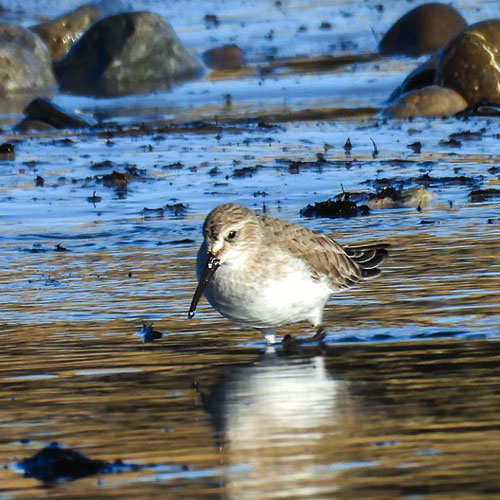 |
| Oystercatcher |
Redshank |
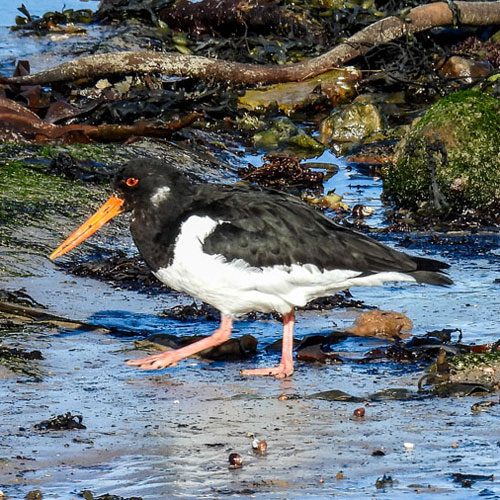 |
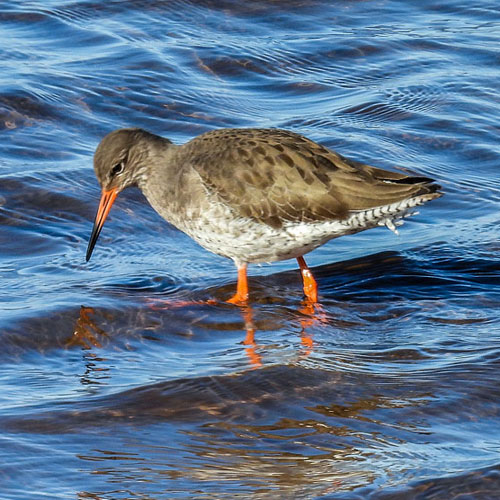 |
| Ringed
Plover |
Sanderling |
 |
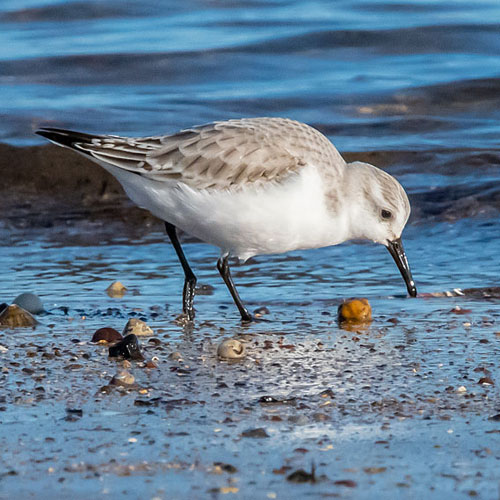 |
FLOWERS & FUNGI
| Common
Snowdrop |
 |
| Crocus |
Glistening
Inkcap |
 |
 |
| Lesser
Celandine |
Lungwort |
 |
 |
| Scarlet
Elf Cup |
Winter
Aconite |
 |
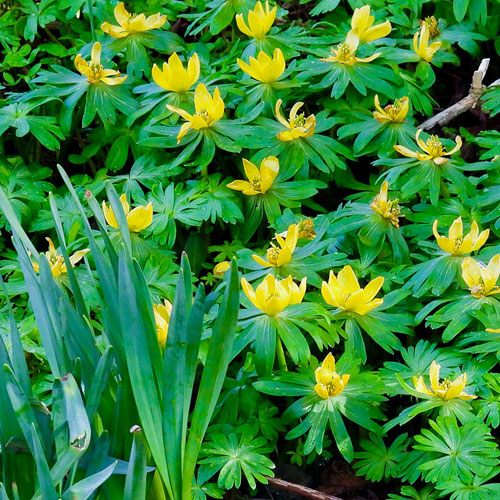 |
SWANS & GEESE
| Canada Goose |
Greylag Goose |
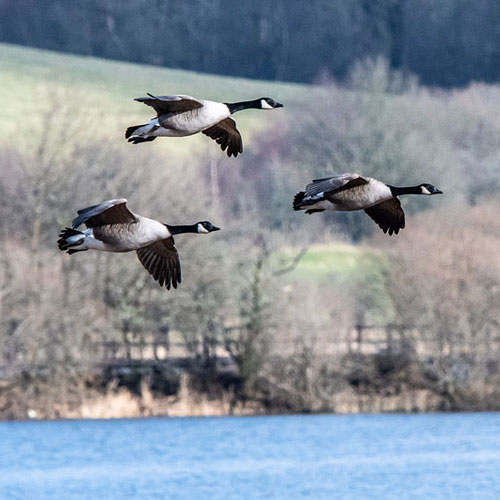 |
 |
| Mute Swan |
Whooper Swan |
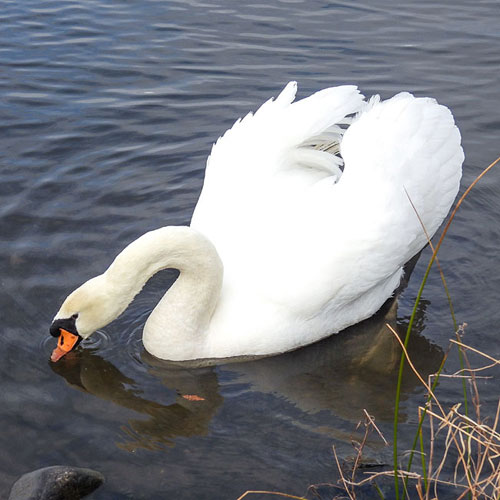 |
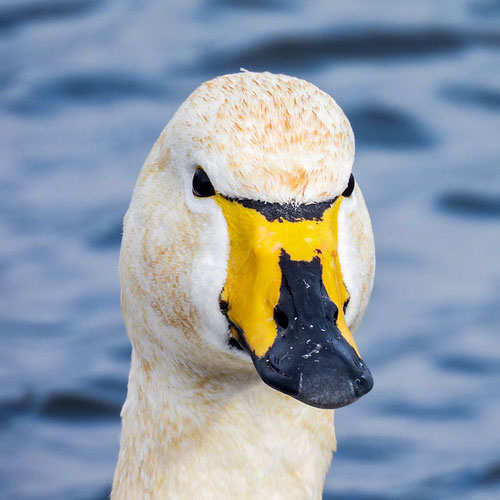 |
DUCKS
| Female
Goosander |
Female
Mallard |
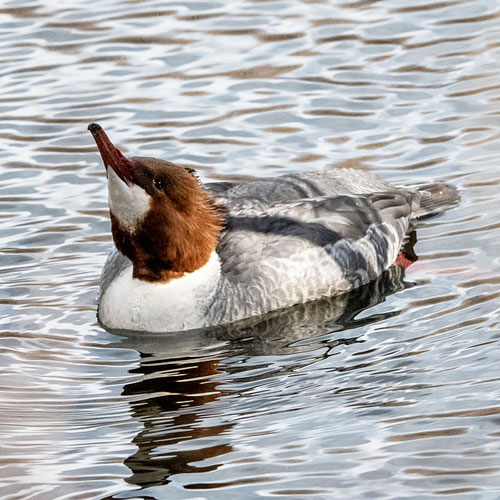 |
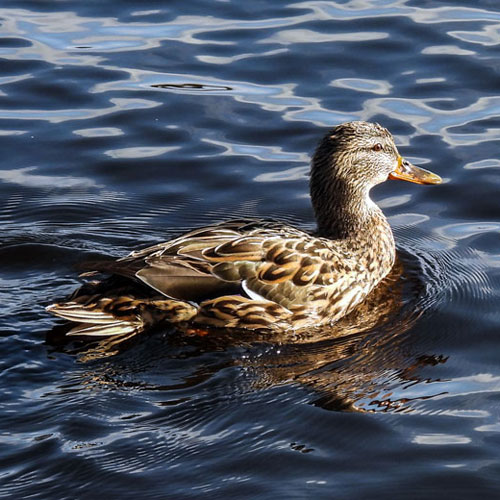 |
| Drake
Mallard |
Shelduck |
 |
 |
| Teal |
Wigeon... |
 |
 |
CORMORANTS & SHAGS
PARK LIFE
| Male
Blackbird |
Carrion
Crow |
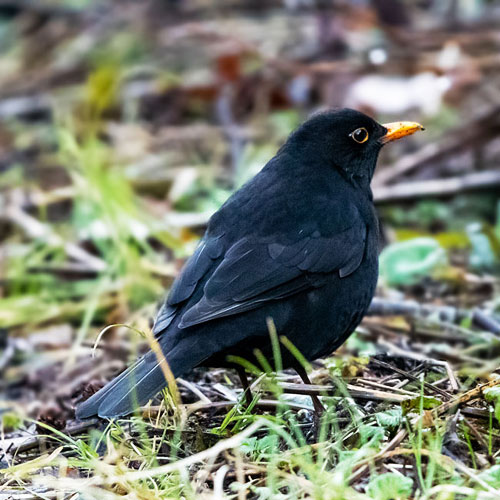 |
 |
| Grey
Heron |
Grey
Squirrel |
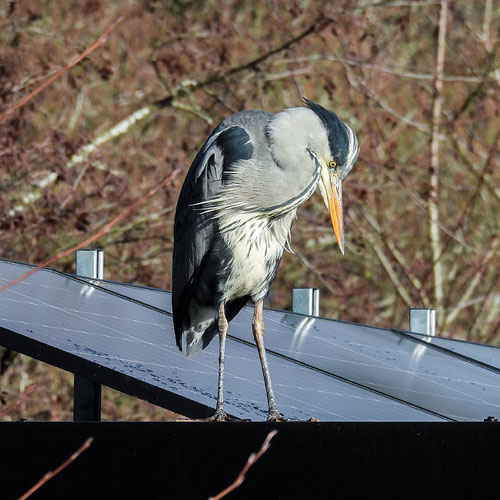 |
 |
| Jackdaw |
Moorhen |
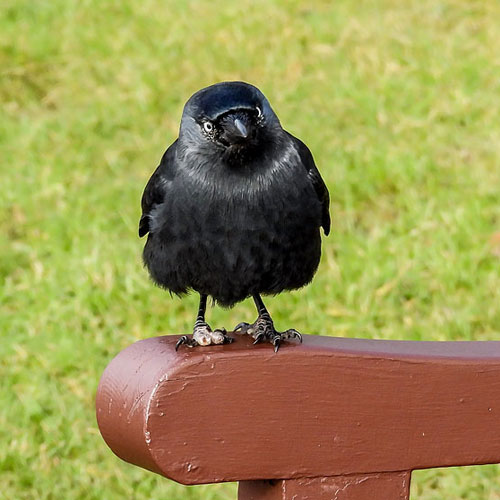 |
 |
| Pied
Wagtail |
Robin |
 |
 |
ON THE SEASHORE
| Grey
Wagtail |
Herring
Gull |
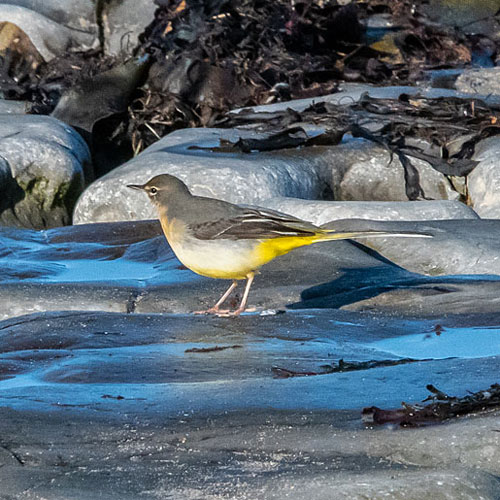 |
 |
Pied Wagtail
|
Rock Pipit
|
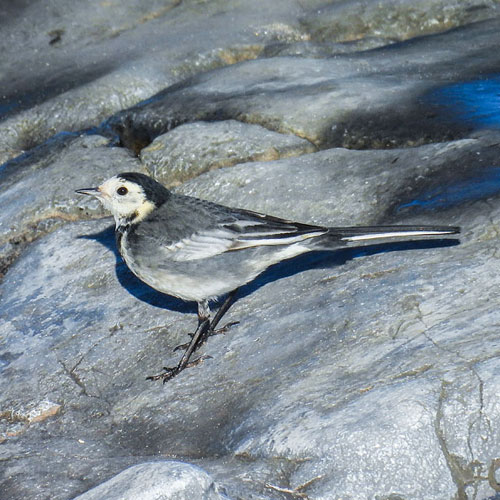
|
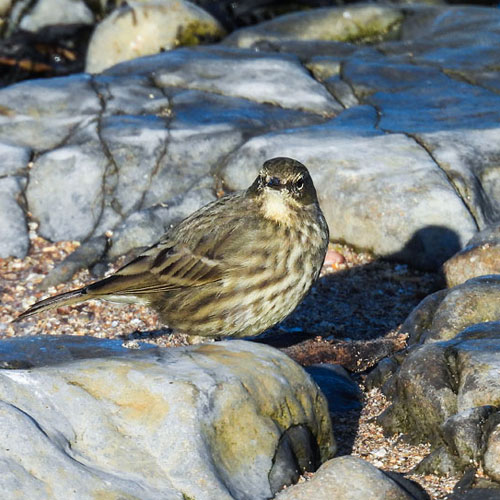
|
Back To Top
|

